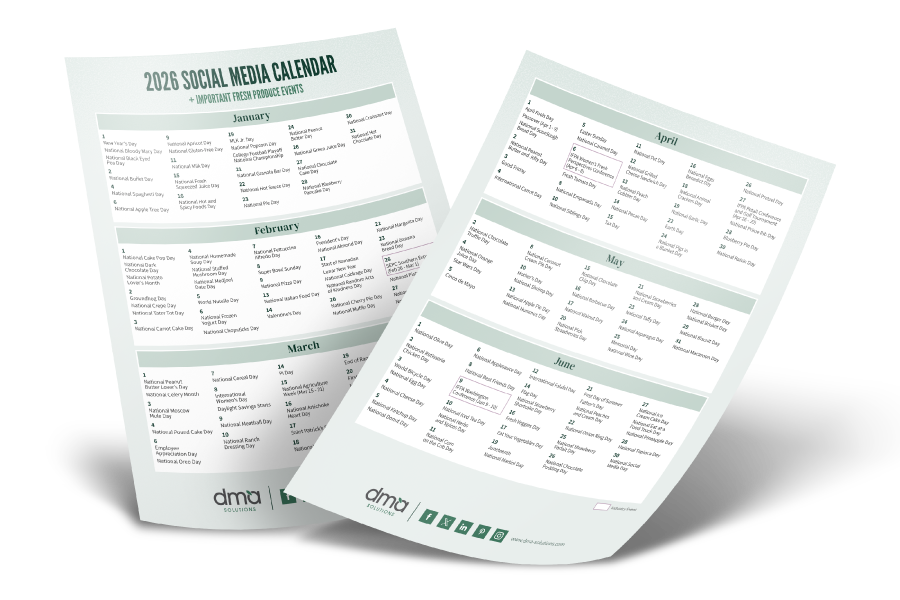The weather is starting to cool off, the leaves are starting to change colors, and you know what that means: tradeshow season is upon us (I’m looking at you, Fresh Summit)! Think about all the work that goes into prepping for a tradeshow: preparing new products or packaging, designing and executing a booth, and the list goes on and on. But what is all that work for if no one knows anything about your brand?
Insert: the press release. Some attempt to argue that the press release is “dead,” but Cision’s 2018 State of the Media Report tells us that 63 percent of editors and writers still see press releases as their most valuable source of information. At DMA Solutions, we firmly believe that the press release is not only alive and well, but also remains one of the best and most effective ways to share a story with the media.
In order to write and deliver an effective press release, success requires developing an understanding of the who, what, when, where and (most importantly) why of each release—before you ever start to write.
Press Release 101: The 5 W’s of a Press Release
The “Who” of a Press Release
An important first step to writing a press release is considering who your message needs to reach. Determine if the story is meant for trade media or consumer media, because each approach will make for two very different stories. Trade media, for instance, is hyper-focused on that specific trade (…get it?). Thus, sending a newsworthy release to the fresh produce trade media is a great and effective way to earn coverage as they are already looking for stories featuring fresh. If you’re wanting to reach consumer media, however, it’s important to consider that the regular consumer may not understand your fresh produce lingo, so it’s necessary to edit the messaging to fit each specific audience.
The “What” of a Press Release
According to the Merriam-Website Dictionary, the official definition of a press release is, “an official statement that gives information to newspapers, magazines, television news programs, and radio stations.” A press release should be sharing newsworthy information (company announcements, new products, new hires, etc.). In journalism, we’re taught to write press releases using the “inverted pyramid.” Picture a pyramid flipped upside down: the information should read from most important to the least important. If someone only read the headline and first paragraph (and let’s face it, that’s becoming more and more common) of your release, they should be able to understand what your release is about and what they most need to know about your story.
The “When” of a Press Release
While your release needs to be about newsworthy information, it’s also important for it to be timely. Who wants to read about a “new” product launch if the product hit store shelves a year ago? One of my own personal favorite quotes is, “Early is on time, on time is late, and late is unacceptable.” The same concept applies to a press release. If your story encourages people to stop by your booth at a tradeshow, it needs to be released with enough time for people to plan ahead (because we all know how quickly certain tradeshow schedules can fill up). In the world we live in, remember that if the information isn’t timely, it isn’t newsworthy.
The “Where” of a Press Release
Including the “where” in your press release is the best way to drive traffic to a store, website or tradeshow booth. For example, if you’re launching a new product, include where your product can be found. If you’re displaying new packaging at a trade show, include where your booth is located to drive people there. Readers want to know how the information you’ve included actually affects them, so give them a compelling reason to read further by adding details about where they can learn more and/or purchase your product.
The “Why” of a Press Release
Plot twist: had I followed the inverted pyramid for this blog post, I would have put this “why” section up top. Once you understand why you need a press release, you’ll also see why DMA Solutions is so confident that the press release is still alive. So, why write a press release?
- You get to control the message. If you send a reporter a new product over social media, you’re leaving it up to him or her to decide the story. However, if you write and send a release about it, you have the ability to position how your story is told.
- Press releases allow you to reach different audiences. For those who are new to the fresh produce industry, knowing which trade publications and which reporters to contact is crucial for building a positive brand reputation—this is where long-standing relationships with the trade come in handy!
- Press releases lead to results. At the bottom of every press release should be a call to action (CTA) encouraging your readers to click a link, purchase a product or stop by your booth. If you’re looking for brand impressions, press releases will garner coverage and impressions through potential pick-up by multiple outlets.
Targeting the right audience, announcing newsworthy and timely information and including how the information affects your readers are important factors to consider when writing a press release. And with all the tradeshow buzz heading into Fresh Summit, now may just be the perfect time to highlight your brand with the trade. Speaking of Fresh Summit, check out our most recent content to help you prepare for the big show:
- What’s New at Fresh Summit 2019
- Want to meet with DMA at Fresh Summit? Learn more about what that entails (and what it doesn’t!)
- How to Make the Most of Fresh Summit 2019
Have something to add to one of the W’s? Leave us a comment below or reach out to us on Twitter @TheCoreBlog!
{{cta(‘fbc3d34f-cf67-49f8-9826-6a9a4c06733c’)}}

